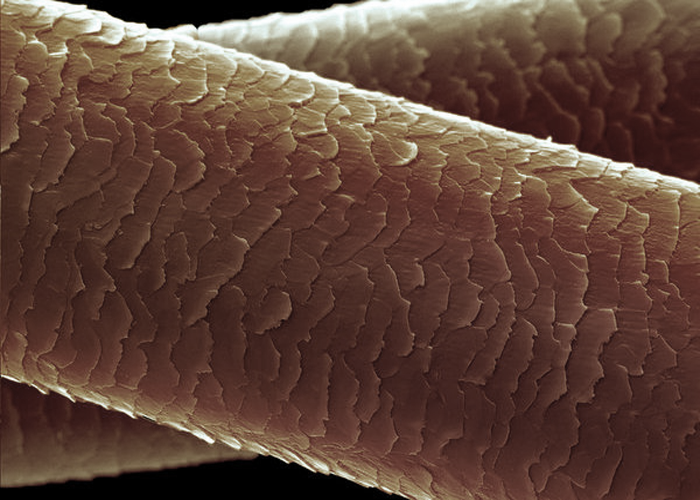YOU HAVE HEARD OF KERATIN:
There are “soft” keratins and “hard” keratins. Soft keratins are more flexible and hard keratins are more rigid. Hard keratins do not dissolve in water and as you might have guessed, is what your hair is made of.
In the follicles under your scalp, your blood supplies all the keratin your hair needs as it is produced in the follicle and emerges to be seen and felt. It is by this process that a single hair fiber is primarily composed of keratin, an amino acid protein. This protein is not only a building block of your hair, but also a principle part of each of the cells of your skin and nails- also found in feathers, hooves, horny tissues and the of enamel of teeth. Keratin filaments run within a cell membrane to weave a “basket” around the center of the cell. In each single strand of hair , keratin proteins account for 65-95% of the total fiber by weight.
WHAT HOLDS HAIR TOGETHER:
In addition to keratin, hair contains a significant amount of sulfur. It is the sulfur linking together in very strong bonds which creates the durability and resistance of a hair fiber to succumb to environmental stress. When you have a perm or have your hair chemical straightening it is alkali which is used to break the bonds in the keratin. While broken, each hair is formed into a new shape and then an acid solution is applied to neutralize the alkali and enable the bonds to reform.
KERATIN AS A SUPPLEMENT:
Some manufacturers claim their products contain keratin which strengthens the hair or causes it to grow. Eating keratin protein does not help hair growth, and is pointless as they cannot be broken down and absorbed, but simply pass straight through the gut.
APPLYING KERATIN TO THE HAIR:
If the inside of your hair has been severely damaged by chemicals,your salon professional may recommend rebuilding it with either, or both, a hard or soft protein, in conjunction with a good dose of other hair building components. This type of treatment is not permanent. Like wise, neither is applying a hard keratin to the outside of the hair to add smoothness. But both uses can add to the hair’s beauty -before it is (mostly) washed away over time by shampooing- if the salon professional uses quality keratins and he or she is highly educated and experienced in their use. Otherwise, application of a hard keratin can break the hair.
FOR MY GEEK FRIENDS to the right is a table of the keratin amino acids present in normal human hair in order of their quantity.
Cysteine 17.5
Serine 11.7
Glutamic acid 11.1
Threonine 6.9
Glycine 6.5
Leucine 6.1
Valine 5.9
Arginine 5.6
Aspartic acid 5.0

